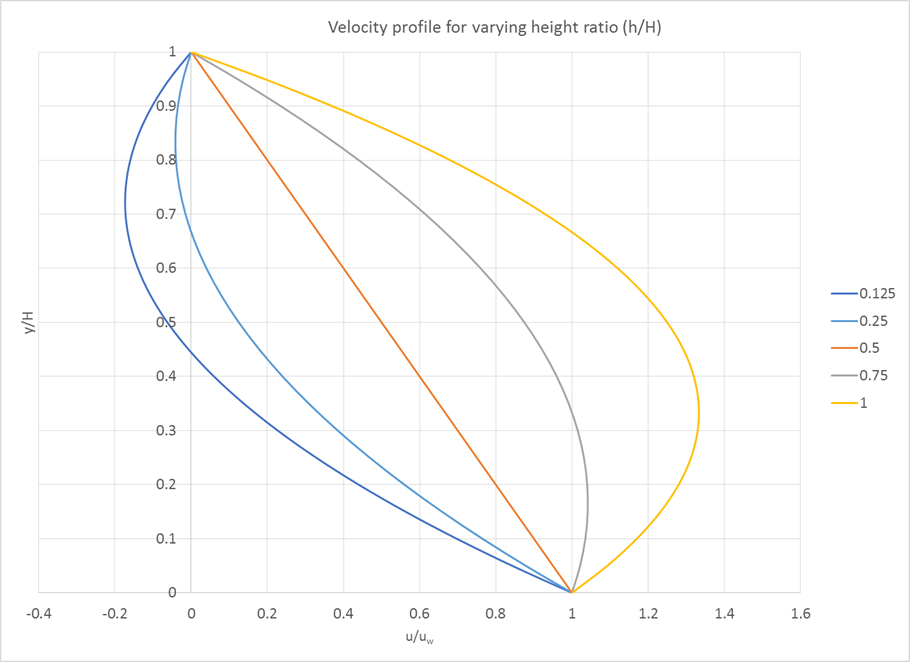The goal of this project is to establish a process-structure link between the geometric settings during casting to the final micro particle distribution of polymer particle composite membranes manufactured using slot-die extrusion. The project has three main phases: experimentation, data collection, and statistical analysis.
The first step is to design an experiment in which the die geometry is changed to see the impact upon particle distributions. To keep the initial experiments simple only a single parameter will be changed, the gap height of die from the substrate (H). We plan on varying the gap height while keeping the film thickness (h), substrate velocity (U), volumetric flow rate (Q’) constant along with the fluid and the particle size and volumetric loading. The ratio between the film thickness and gap height (h/H) has a large influence on the velocity flow profile underneath the die and consequently the equilibrium position of particles in the fluid. The figure below shows how the velocity profile varies for different height ratios.

The second step after casting and curing samples it to determine the particle locations within the membranes. We plan on collecting this data using a micro CT imaging system which can create three dimensional models of the membranes based upon material density differences. The particle location relative to the film thickness can then be gathered for each of the h/H ratios by either direct information from the model or image processing 2-D slices of the model. If possible due to resolution limitations of the CT machine, particle sizes will also be determined. An example membrane and CT image are shown below.

The final phase is to post process the location data. Using the data of the particle locations, a probability density function for the particle location in the film versus the h/H ratio will be determined. This will be used to gauge whether this method to control the location of the particles is viable or if the other competing phenomena (curing dynamics, upstream particle distribution, surface tension effects after die, etc.) during the manufacturing process dominate particle position.